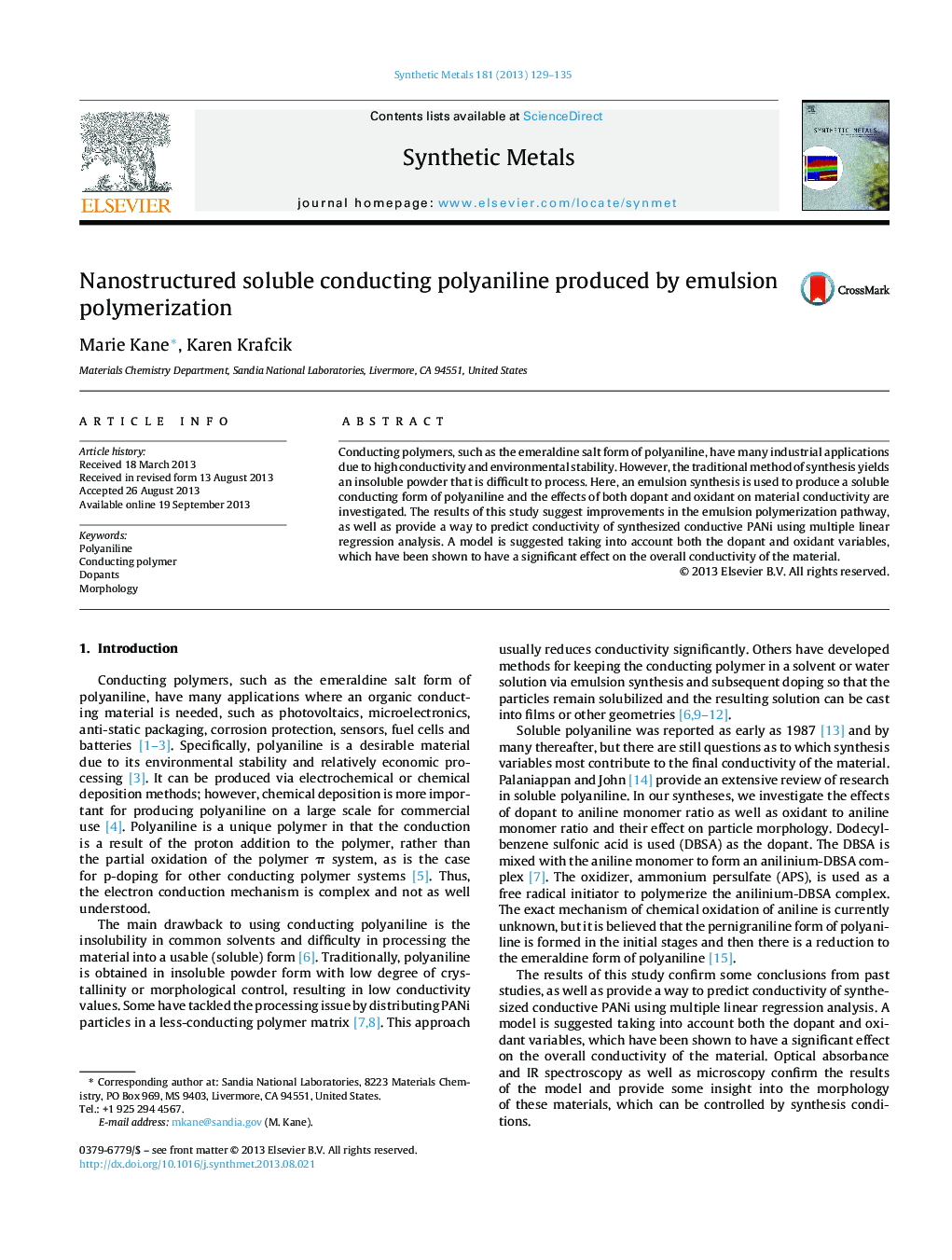| Article ID | Journal | Published Year | Pages | File Type |
|---|---|---|---|---|
| 1441218 | Synthetic Metals | 2013 | 7 Pages |
•Soluble conducting polyaniline was synthesized with varying amounts of dopant and oxidant.•A model is suggested to predict the conductivity based on dopant and oxidant ratios.•The materials were characterized by TEM and UV–vis.•The rod or string-like particle morphologies suggest enhanced crystallinity.•A mechanism is suggested by which the rod or string-like particles are formed in an emulsion.
Conducting polymers, such as the emeraldine salt form of polyaniline, have many industrial applications due to high conductivity and environmental stability. However, the traditional method of synthesis yields an insoluble powder that is difficult to process. Here, an emulsion synthesis is used to produce a soluble conducting form of polyaniline and the effects of both dopant and oxidant on material conductivity are investigated. The results of this study suggest improvements in the emulsion polymerization pathway, as well as provide a way to predict conductivity of synthesized conductive PANi using multiple linear regression analysis. A model is suggested taking into account both the dopant and oxidant variables, which have been shown to have a significant effect on the overall conductivity of the material.
